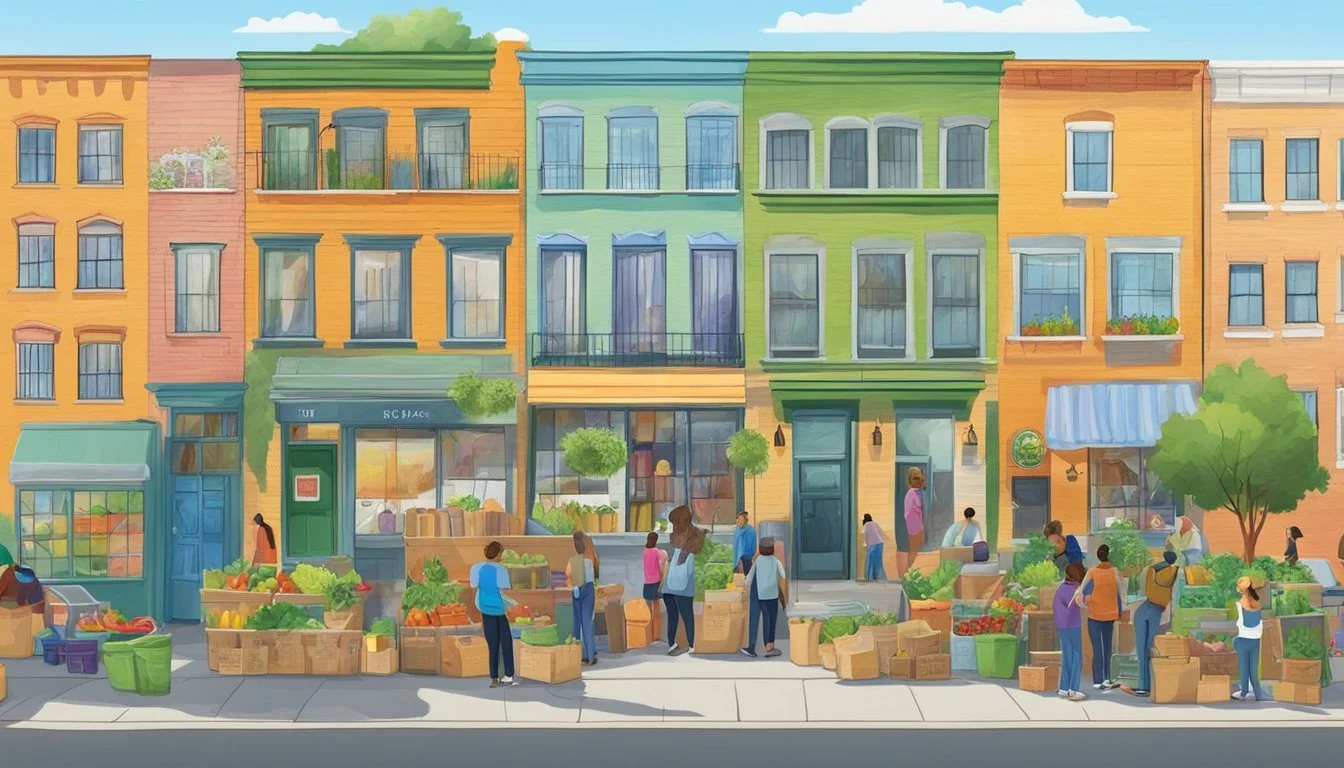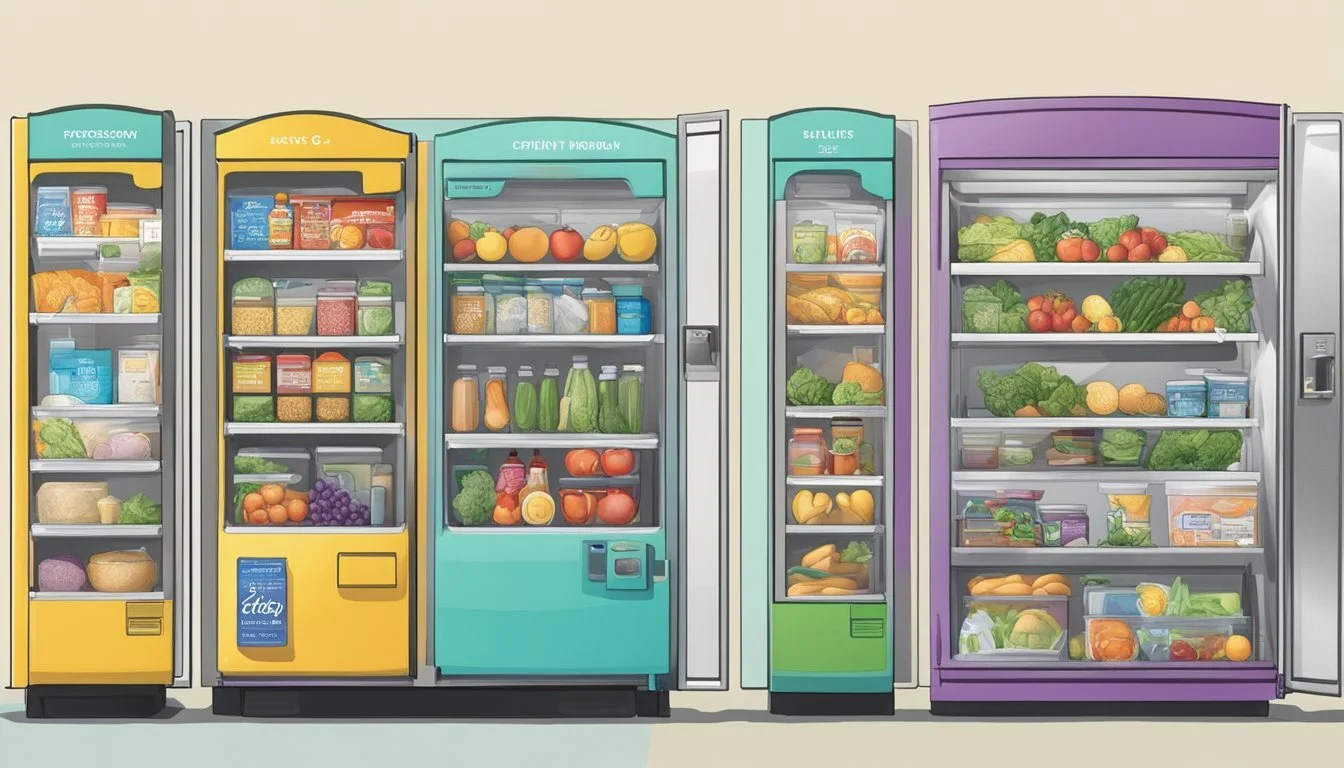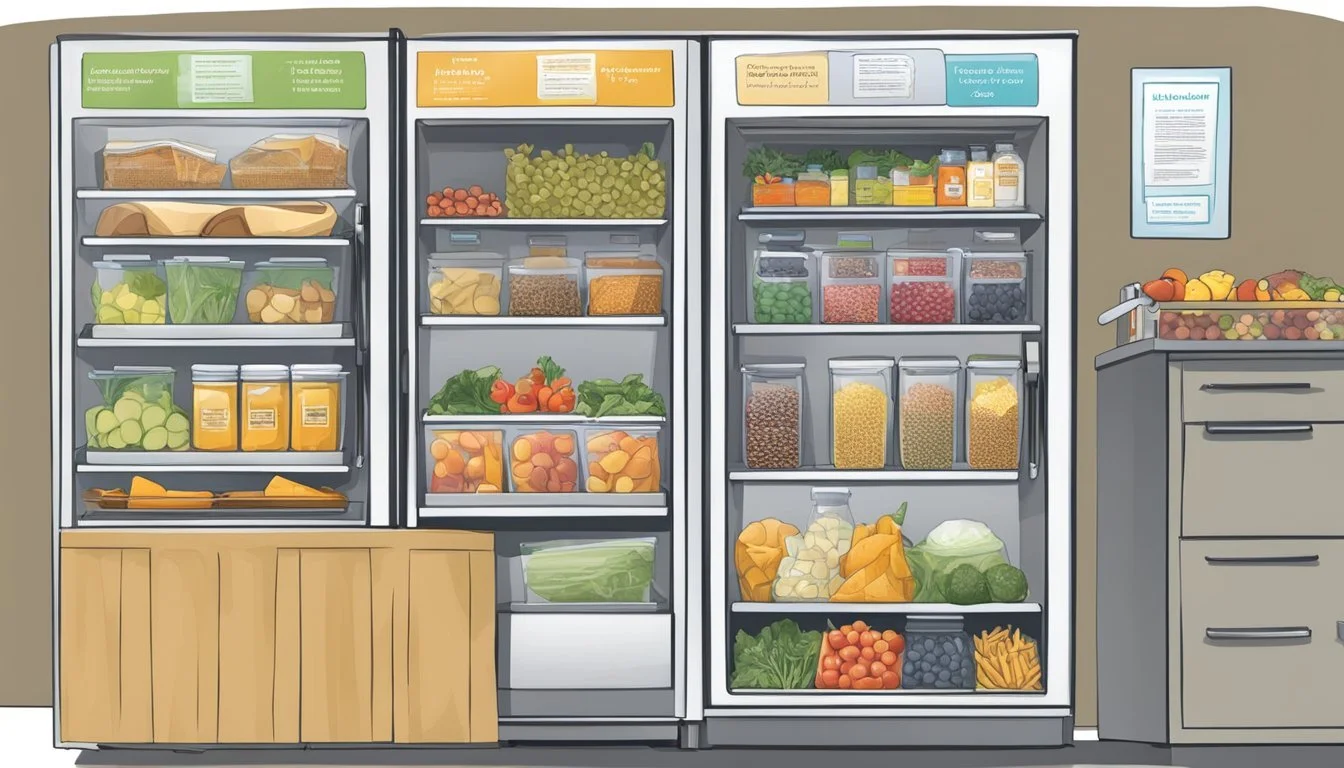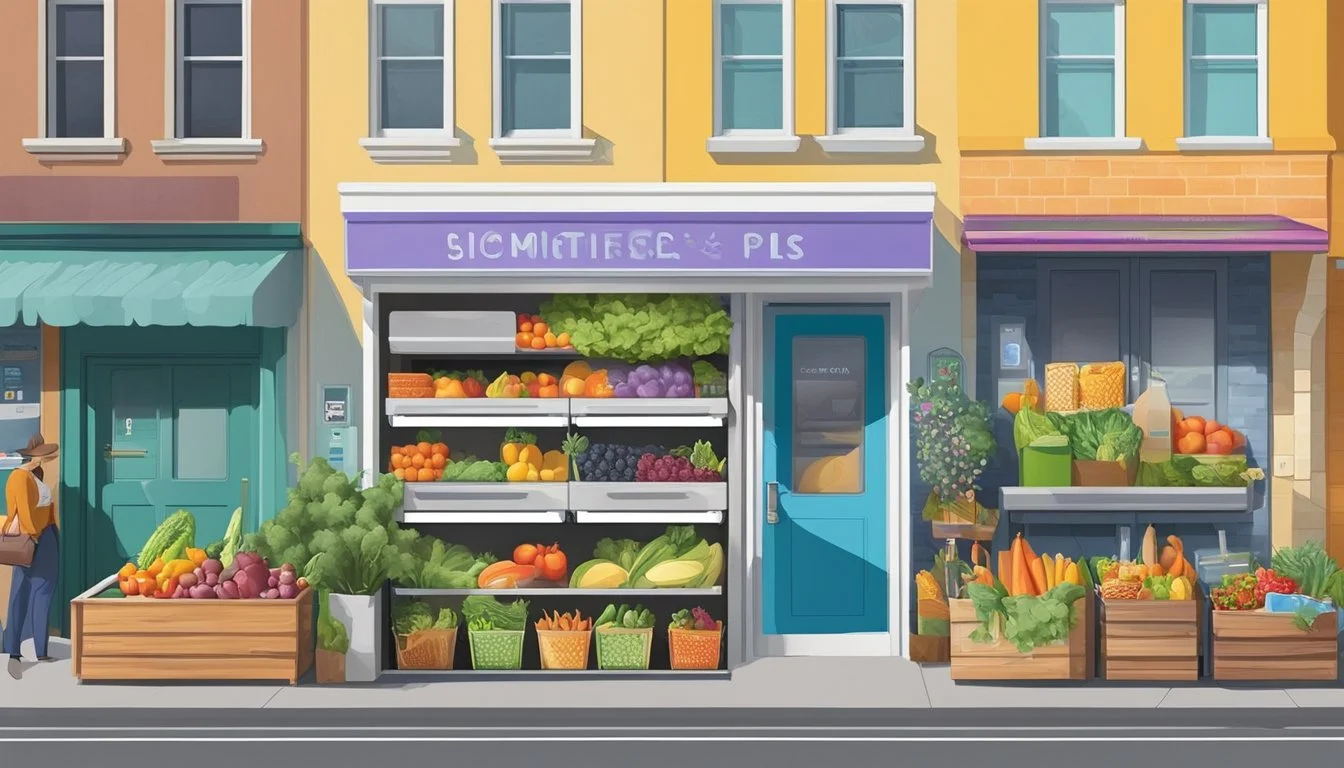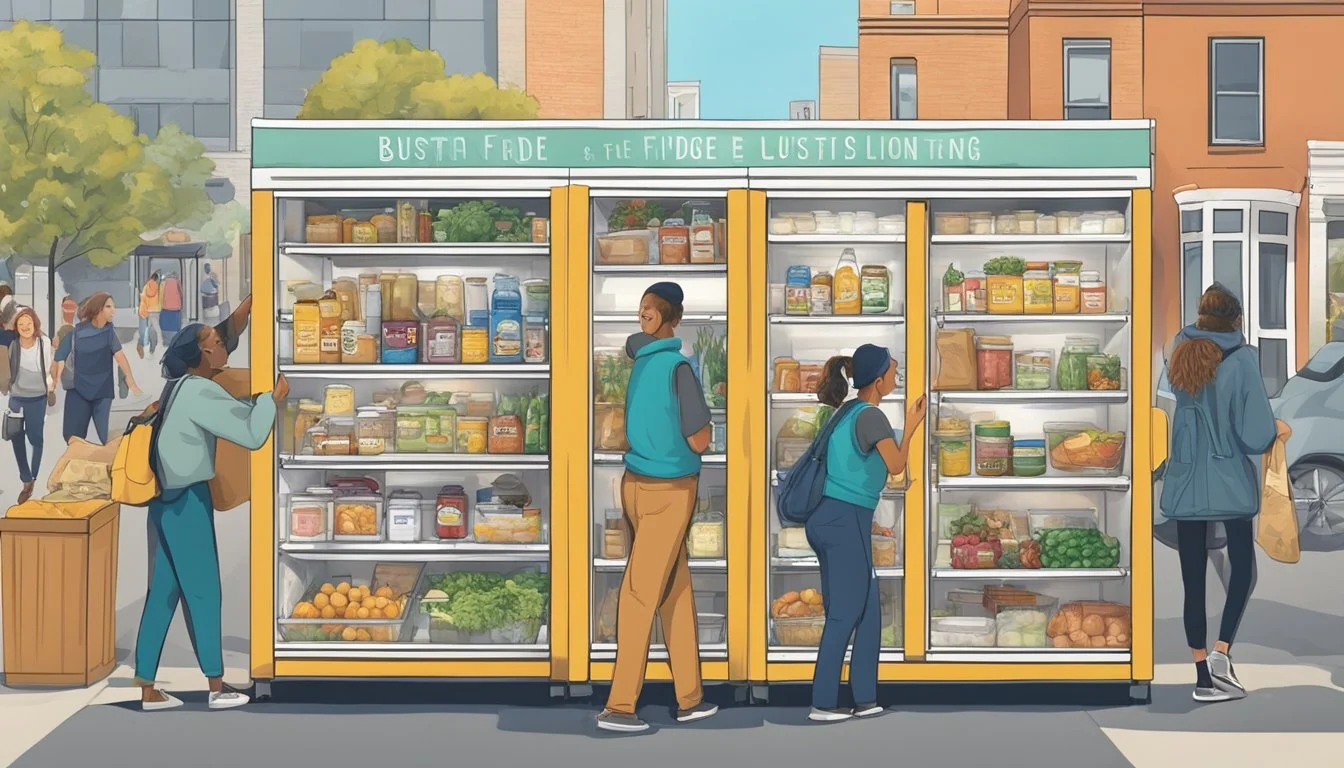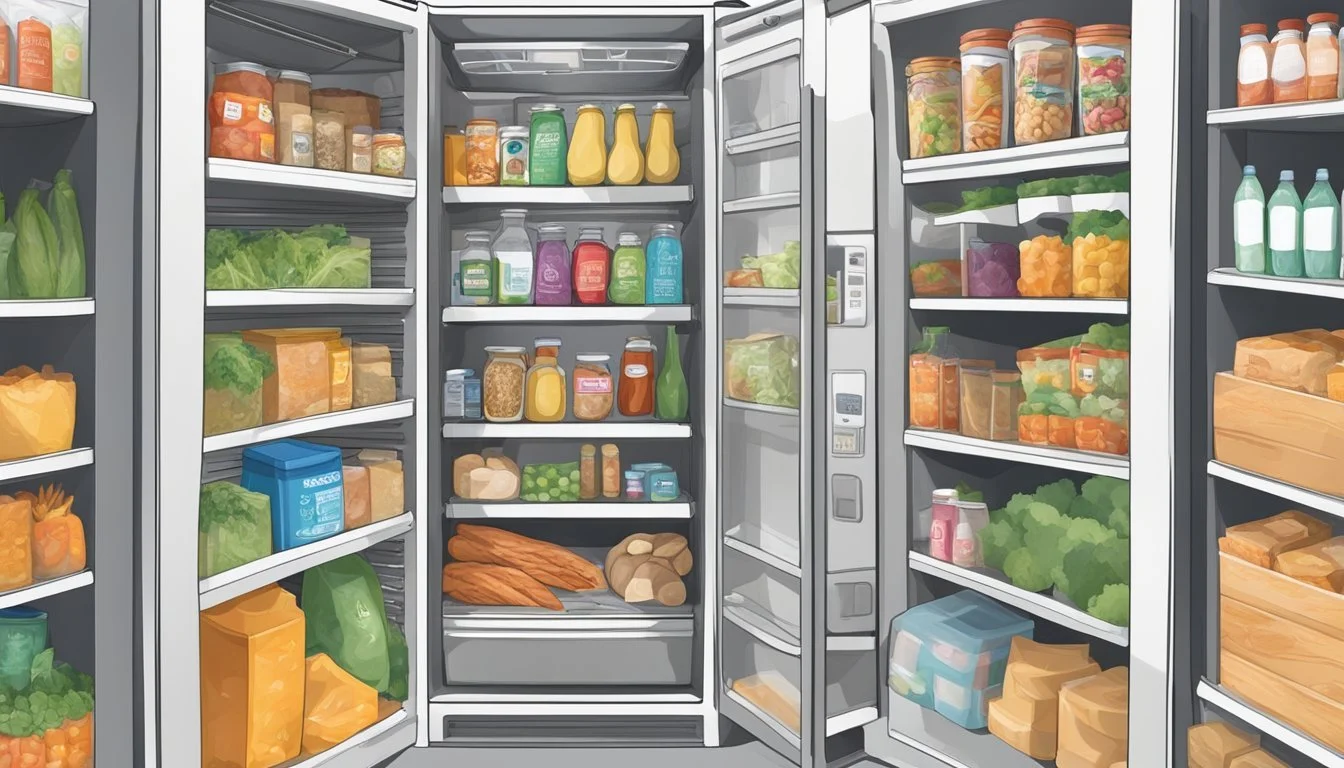Salt Lake City, UT Community Fridge
Bridging Gaps in Food Security
Salt Lake City, Utah, has taken a significant step in addressing food insecurity and fostering a sense of community through the establishment of its first community fridge. Located on the west side of the city, this communal resource operates on a simple yet profound premise—anyone is free to take what they need or leave what they can. The fridge and accompanying shelves for non-perishable items such as canned goods are situated at 1151 N. 1500 West, an area readily accessible to the residents.
The initiative, reflective of a broader movement aimed at alleviating hunger and reducing food waste, encourages locals to engage actively in mutual aid. By allowing residents to both contribute to and benefit from the shared pantry, the community fridge not only provides immediate access to food but also promotes solidarity and cooperation within the neighborhood.
Managed and maintained by volunteers and community organizations, the fridge is subject to the same health and safety regulations that guide traditional food banks. Its presence in Salt Lake City resonates with the city's ongoing efforts to create sustainable, community-led solutions to social issues, signaling a shift towards more inclusive and participatory forms of urban welfare.
Overview of Salt Lake City Community Fridges
Salt Lake City has embraced an innovative way to tackle food insecurity through the establishment of community fridges, aiming to foster mutual aid and support among residents.
Mission of Salt Lake Community Mutual Aid
The mission of the Salt Lake Community Mutual Aid is to provide a sustainable, community-driven solution to hunger and food waste. These community fridges enable residents of Salt Lake City to share surplus food and provide for those in need on a principle of take-what-you-need, leave-what-you-can.
Location and Accessibility
The first community fridge was established on the west side of Salt Lake City, specifically at 1151 North and 1500 West. It is designed to be accessible 24/7 to all residents, ensuring that people can either donate or take food items with ease. The fridge is encased in a shed, with shelves dedicated to non-perishable canned goods.
Community Impact
Community fridges in Salt Lake City have had a significant positive impact on local communities, reducing food insecurity and promoting a culture of sharing. By cultivating an environment where Utah residents support each other, these fridges help to strengthen community bonds and reduce waste, ensuring food gets to those who need it most.
Participating in the Community Fridge Program
The Community Fridge Program in Salt Lake City empowers residents to combat food insecurity through direct action. They facilitate food sharing and support for those in need via a simple yet effective system.
How to Donate
To make a donation, individuals must first locate the community fridge. The pioneering fridge can be found at 1151 N. 1500 West, easily accessible to the public. Donors are encouraged to ensure that food items are fresh and safe for consumption prior to contributing.
What to Donate
Donations of food should adhere to the following guidelines:
Perishables: Fresh fruits, vegetables, bread, and prepared meals in clean, labeled packaging.
Non-perishables: Canned goods such as vegetables, fruits, soups, and beans are very much welcome. These should be unopened and undamaged, with the expiry date still far off.
Please ensure that all donated items comply with the safety standards and are considerate of diverse dietary needs and restrictions.
Volunteering Opportunities
The program thrives on the dedication of its volunteers, who manage food safety, organization, and distribution. Individuals looking to engage in this service can reach out to program coordinators for opportunities in stocking and monitoring the pantries, cleaning, and community outreach. Interested parties can find more information through the community fridge's social media channels or directly at the physical location.
Setting Up a Community Fridge
Implementing a community fridge in Salt Lake City involves careful consideration of location, amenities, and maintenance processes to ensure a successful operation that serves the needs of the community effectively.
Finding a Suitable Location
A critical first step is locating a proper site for the community fridge. The chosen locale should be easily accessible to the public, with 1151 N. 1500 West serving as a prime example of a community-driven initiative on the west side of Salt Lake City. A location such as a front yard can offer the necessary visibility and convenience for community members to both contribute to and benefit from the fridge.
Required Amenities
Necessary amenities for a viable community fridge must include a functioning refrigerator and potentially, a freezer. These appliances should be weatherproof, especially if placed outdoors, and require a steady supply of electricity. It is imperative that the fridge has adequate space around it for associated infrastructure, like shelving for canned goods and a cover like a shed to protect it from the elements.
Maintenance and Upkeep
Regular maintenance is essential to ensure the fridge operates safely and hygienically. The community should establish a:
Fridge Cleaning Agreement: A schedule for routine cleaning and food safety checks by dedicated volunteers.
Repair Plan: Protocols for addressing breakdowns or malfunctions of the fridge promptly.
Maintaining a community fridge demands commitment, with volunteers needing to invest approximately 1-3 days per week to keep the operation running smoothly.
Safety and Health Guidelines
The safety and integrity of food offered through Salt Lake City's community fridges are of paramount concern. Proper health guidelines are established to protect the community and ensure the well-being of those who depend on this vital resource.
Ensuring Food Safety
When operating or using a community fridge, food safety is the top priority. It is essential that:
Perishable goods like dairy, meats, and cooked meals (how long do cooked meals last?) must have a clear expiration or "use by" date and be placed in the fridge promptly after donation.
Non-perishable items such as canned goods need to be checked for integrity; dented, rusted, or bulging cans cannot be accepted due to risks of botulism and other foodborne illnesses.
Prohibited items include:
Alcohol
Opened packages
Homemade meals without secure labeling
Medications
Groceries and food banks donating to the fridges should ensure all items meet the following criteria:
Factory sealed
Within the expiration date
Labeled for allergens when applicable
Regular Cleaning Protocols
Consistency and thoroughness in cleaning are crucial for maintaining public health standards. The fridges should be subjected to:
Daily Inspections: Checking for spoilage and potential contaminants.
Weekly Deep Cleaning: Using food-safe cleaners to wipe down all surfaces.
Cleaning checklist:
Interior and exterior surfaces
Shelves and drawers
Door seals
Grocery stores, food banks, and other entities involved must monitor their items and the cleaning schedule to minimize health risks. Volunteers often spearhead cleaning efforts, following a set of guidelines to ensure the safety and cleanliness of the fridges and the surrounding areas.
Additional Resources and Information
Salt Lake City hosts a number of community fridges, which are part of a broader network of food assistance programs. These fridges operate through the collaboration of local businesses and educational initiatives aimed at addressing food insecurity.
Partnership with Local Businesses
Local businesses in Salt Lake City have partnered with organizations like the Salt Lake Community Mutual Aid Group to stock and support community fridges. These businesses contribute a variety of food items, helping to ensure the fridges are regularly filled with nourishing options for those in need. The exact location of a prominent community fridge is 1151 N. 1500 West, which is maintained through these business partnerships.
Educational Resources for the Public
The Salt Lake Community Mutual Aid Group not only offers direct services through community fridges but also provides educational resources to the public. They aim to empower residents with knowledge on food sustainability and managing food resources wisely. To support the service offered by the community fridge, educational materials may include food safety, nutrition information, and ways to contribute to the community fridge initiative.
Design and Aesthetics
The Community Fridge initiative in Salt Lake City is not just a functional endeavor but also a project with attention to design aesthetics. This focus ensures the fridges blend with their surroundings and are visually pleasing.
Customizing Appliance Appearance
Refrigerators on the west side of Salt Lake City, notably at 1500 West, have been tailored to integrate into the local environment. The customization process can involve paint to add a pop of color or artistic designs that reflect the neighborhood's spirit. These appliances often feature an ice maker, a practical component for community members' convenience.
Landscaping and Surrounding Areas
The area surrounding the community fridge is carefully considered, often featuring xeriscape landscaping to align with Salt Lake City's climate and ecological needs. Xeriscaping involves designing landscapes to reduce or eliminate the need for irrigation, primarily using drought-resistant plants. This type of landscaping not only conserves water but also creates a harmonious and sustainable setting for the fridge. The landscape often includes:
Drought-resistant plants: Conserve water and require minimal maintenance.
Mulches and gravels: Aid in soil moisture retention and weed reduction.
Sustainability and aesthetics go hand in hand in these spaces, reflecting a commitment to community well-being and environmental responsibility.
Challenges and Solutions
Community fridges, like the one on the west side of Salt Lake City, aim to reduce food waste and offer accessible food resources. However, they face unique challenges in regulation and integration into neighborhoods, which require innovative and pragmatic solutions.
Regulating Food Donations
One significant challenge is ensuring the safety of the food donations. It is crucial to maintain a standard where the food provided is safe to consume, which means regular monitoring and clear guidelines about what can be donated. For instance:
Perishables: Strict check-in and check-out procedures to ensure freshness.
Non-perishables: Encouragement of canned goods donations and clearly labeled expiration dates.
This system gives volunteers the ability to speedily remove items that pose a health risk, therefore protecting both the initiative and the individuals it serves.
Dealing with Increased Foot Traffic
The presence of a community fridge can lead to an increase in foot traffic, which has to be managed to minimize the impact on local residents. Measures to tackle this include:
Location Selection:
Ensuring the fridge is easily accessible but doesn’t intrude on personal properties.
Placement near existing community centers to integrate with current traffic patterns.
Community Engagement:
Involving local residents and businesses in maintaining the fridge.
Addressing community concerns promptly and effectively.
This approach ensures the fridge supports the neighborhood without causing undue disturbance or safety concerns.
Technology and Innovations
In Salt Lake City's west side, the notion of a community fridge suggests an intersection of humanitarian aid and technology. Here, innovation serves a dual purpose: supporting community welfare and exemplifying modern appliance advancements.
Smart Appliance Features
Community fridges, such as the one found at 1151 N. 1500 West in Salt Lake City, leverage smart appliance features that can range from temperature regulation to inventory management. Manufacturers like Samsung are at the forefront, creating appliances that not only preserve food efficiently but also incorporate connectivity for monitoring and control.
Remote Monitoring: Users can check the appliance’s contents and temperature remotely, ensuring food safety.
Energy Efficiency: Smart fridges are often designed to minimize power consumption, a critical feature for community-shared resources.
Inventory Alerts: With advancements in technology, appliances can notify when supplies are low or when an item is nearing its expiry date.
Smart features on appliances play a crucial role in maintaining the efficacy of community-oriented initiatives like the community fridge.
Future Prospects
The ongoing success of the community fridge on the west side of Salt Lake City paves the way for advancing food security and community cohesion through targeted expansion and sustainability efforts.
Expansion Plans
The program organizers are evaluating the community's response to the first fridge, located at 1151 N. 1500 West. Strong community engagement and high foot traffic suggest a solid foundation for adding more fridges throughout Salt Lake City. Expansion plans focus on:
Strategic Locations: Identifying neighborhoods with the highest need and ensuring they are accessible to maximize benefit.
Community Partnerships: Collaboration with local businesses and organizations to sustain and support additional fridges.
Sustainability Initiatives
As the community fridge initiative grows, sustainability remains a core priority. These initiatives aim to:
Minimize Waste: Careful monitoring and partnerships to ensure food is utilized before it spoils.
Education: Providing information and resources on reducing food waste and promoting community food sharing practices.
By achieving these objectives, the community fridge project intends to strengthen its role in the local fabric of Salt Lake City and beyond.
Conclusion
Community fridges, like the one in Salt Lake City on its west side, have emerged as a resourceful solution to address food insecurity within local neighborhoods. They operate on a simple premise: take what you need, leave what you can. This initiative not only makes food more accessible to those in need but also fosters a sense of community and collective responsibility.
The Salt Lake City fridge, situated at 1151 N. 1500 West, is a testament to community solidarity in addressing hunger and preventing food waste. The benefits of such a fridge include:
Ease of Access: Available to all, regardless of income.
Community Support: Encourages locals to support each other.
Reducing Waste: A practical step towards environmental sustainability.
Volunteers manage the fridge and they ensure that the food is safe and the area is clean. Donations from individuals and businesses keep the fridge stocked. Items like canned goods and fresh produce are common sights, offering balanced options for a variety of dietary needs.
Although the concept is simple, the impact is significant. Community fridges offer a dignified way for individuals to obtain food without the stigma that sometimes accompanies traditional food aid programs. Salt Lake City's example could inspire other communities to adopt similar programs, reinforcing community connections and assisting those facing food scarcity.



